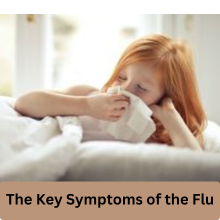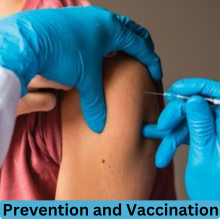
Cold, flu, and COVID-19 season is here, and it’s easy to confuse one with the other. The overlapping symptoms of these illnesses can make it tough to know exactly what’s causing you to feel under the weather. Whether you’re dealing with a runny nose, cough, or sore throat, it’s important to understand the differences so you can take the right steps to recover. In this article, we’ll walk through how to differentiate between a cold, the flu, and COVID-19, and discuss important facts on prevention, symptoms, and treatment.
Cold and Flu Season: Understanding the Timeline
As we move into the winter months, respiratory illnesses become more common. Cold season officially kicks off in the fall and lasts through the spring. This is when the air is cooler, and the viruses that cause colds circulate more easily.
Flu season, on the other hand, peaks from December to February, although it can start as early as October and last into March. The flu is typically more severe than a cold and can lead to serious health complications, especially in vulnerable populations.
What Is the Common Cold?
A cold is a viral infection that affects the upper respiratory system, primarily the nose and throat. The most common virus responsible for colds is the rhinovirus, although other viruses can cause similar symptoms.
Common cold symptoms tend to include:
- Runny or stuffy nose
- Sneezing
- Sore throat
- Fatigue
- Mild headaches
- Coughing
Cold symptoms usually come on gradually and last anywhere from a few days to a week. In most cases, a cold is mild and can be managed with rest, hydration, and over-the-counter medications.
What Is the Flu?
The flu, short for influenza, is a more severe respiratory illness caused by the influenza virus. It can cause widespread illness during flu season and, in some cases, lead to serious complications like pneumonia, especially in high-risk individuals.
Flu symptoms include:
- Sudden fever
- Sore throat
- Runny nose
- Severe fatigue
- Body aches and chills
- Cough
Unlike the gradual onset of cold symptoms, the flu typically hits quickly, and the severity of symptoms makes it harder to get through the day. The flu is often accompanied by a high fever, which is less common in colds.
The Key Symptoms of the Flu
Flu symptoms can often include:
- Fever – A high temperature that can last for several days.
- Sore throat – A severe scratchiness or pain when swallowing.
- Fatigue – Extreme tiredness that makes it hard to do anything.
- Coughing and body aches – Persistent cough, muscle aches, and joint pain.
Flu symptoms can sometimes lead to complications like sinus infections, pneumonia, or exacerbation of pre-existing chronic conditions like asthma or heart disease.
What Is COVID-19?
COVID-19, caused by the SARS-CoV-2 virus, is a relatively new illness that emerged in late 2019. Since then, it has caused widespread illness and death across the globe. Unlike the flu or cold, COVID-19 can have a prolonged impact on health, sometimes leading to long-lasting symptoms known as “long COVID.”
Common symptoms of COVID-19 include:
- Fever or chills
- Cough
- Sore throat
- Fatigue
- Shortness of breath or difficulty breathing
- Loss of taste or smell
Unlike the flu and cold, COVID-19 can affect other organs and systems, potentially causing serious complications like lung damage or blood clotting issues.
Common Symptoms of COVID-19
The primary symptoms of COVID-19 overlap with those of the flu and cold, such as:
- Fever and chills
- Cough
- Fatigue and body aches
- Loss of taste or smell (a unique symptom for COVID-19)
- Shortness of breath
If you’re feeling symptoms like these, it’s crucial to get tested, as early detection can help prevent further spread and ensure you receive the correct care.
How Do Cold, Flu, and COVID-19 Compare?
While cold, flu, and COVID-19 all share similar symptoms, there are a few important differences to note.
- Onset Speed:
- Colds develop slowly over a few days.
- The flu comes on rapidly, often within hours.
- COVID-19 symptoms may appear more gradually and can linger longer than cold or flu symptoms.
- Symptom Severity:
- Colds are typically mild.
- Flu can be severe, with fever and body aches.
- COVID-19 can cause significant respiratory issues, including shortness of breath.
- Duration:
- Colds last around 5-7 days.
- Flu lasts about 1-2 weeks.
- COVID-19 can last several weeks and may result in long-term effects.
Key Differences in Symptoms
To make things clearer, let’s break down the symptoms:
- Cold: Mild symptoms like a runny nose, sore throat, and mild fatigue. No fever.
- Flu: Sudden fever, sore throat, body aches, and extreme fatigue. Symptoms are much more severe.
- COVID-19: Similar to the flu but may include a loss of taste or smell and more significant breathing difficulties. It can last longer and cause long-term health problems.
Why Is It Hard to Tell the Difference?
The overlapping symptoms of cold, flu, and COVID-19 can make it tough to tell them apart without medical testing. Since many of these illnesses spread in similar ways, the best approach is to get tested and follow guidance from healthcare professionals.
Also read: Lay’s Chips Recalled Due to Hidden Allergen—Find Out Why
When Should You Seek Medical Attention?
It’s important to seek medical help if you experience any of the following:
- Difficulty breathing
- Persistent chest pain
- Confusion or sudden dizziness
- A high fever that doesn’t go away
- Severe weakness or fatigue
If you’re unsure, especially with COVID-19, it’s better to consult a doctor.
Prevention and Vaccination
The best way to protect yourself against the flu and COVID-19 is through vaccination.
- Flu shots: Recommended for everyone six months and older. Vaccines reduce the severity of the flu and prevent complications.
- COVID-19 vaccines: Protect against severe illness and hospitalization.
- Other prevention measures: Regular handwashing, masking, and social distancing can help prevent the spread of these illnesses.
Flu Vaccine Availability and Cost
Flu vaccines are widely available at pharmacies, doctor’s offices, and health clinics. For those with insurance, the flu shot is usually free or at low cost. If you don’t have insurance, there are still many low-cost or free flu shot options available.
RSV: A Respiratory Illness to Know About
Respiratory Syncytial Virus (RSV) is another common illness, especially among infants and the elderly. It can cause severe respiratory problems like pneumonia and bronchiolitis.
RSV Symptoms:
- Runny nose
- Cough
- Decreased appetite
- Fever
- Wheezing
You can prevent RSV through vaccination, particularly for vulnerable groups like older adults and infants.
How to Stay Safe During Cold and Flu Season
To stay safe, practice good hygiene: wash your hands regularly, cover your coughs and sneezes, and avoid close contact with sick individuals. Getting vaccinated and staying healthy through proper nutrition and exercise can also reduce your chances of getting sick.
Also read: Get Up to $1,500 Fast: Jackson Hewitt Holiday Loan Explained
Conclusion
While colds, flu, and COVID-19 share some common symptoms, the differences in severity, onset, and complications are key to telling them apart. Always seek professional advice if you’re unsure, and remember that prevention through vaccination, good hygiene, and maintaining a healthy lifestyle are your best defenses.
FAQs
How do I know if I have a cold or the flu?
If you develop symptoms quickly with fever and body aches, it’s more likely the flu. Colds come on gradually and have milder symptoms.
Can COVID-19 symptoms appear without a fever?
Yes, COVID-19 can cause symptoms like fatigue, cough, and loss of taste or smell without a fever.
Should I get a flu shot even if I’ve already had the flu?
Yes, the flu shot can protect you from different strains of the virus, and it’s still important even after you’ve been sick.
What should I do if I’m not sure whether I have a cold or COVID-19?
It’s best to get tested for COVID-19 to be sure, especially if you have symptoms that may overlap with both illnesses.
How long do cold symptoms last?
Colds usually last from 5 to 7 days, but symptoms can linger for a little longer.

